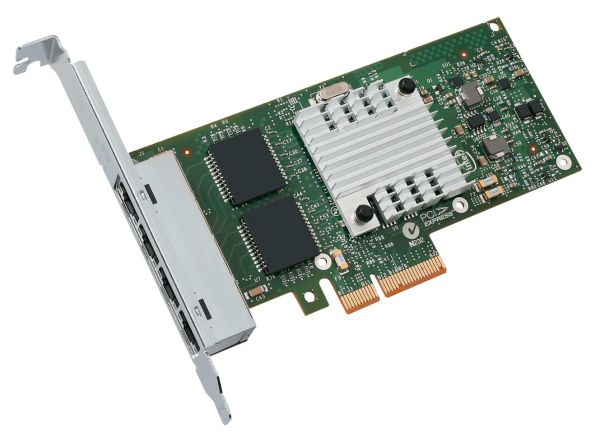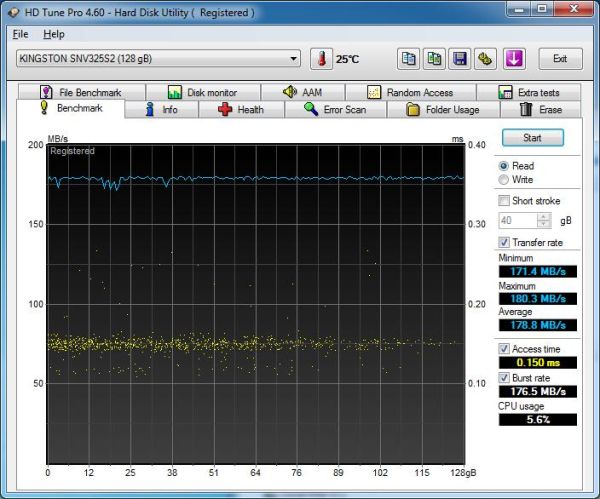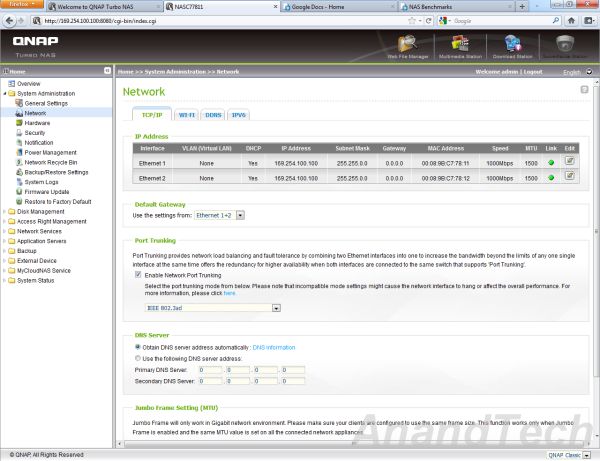QNAP TS-659 Pro II Review
by Ganesh T S on September 19, 2011 8:00 AM EST- Posted in
- IT Computing
- NAS
- QNAP
For the purpose of NAS reviews, we have setup a dedicated testbed with the configuration as below. The NAS is directly connected to the testbed (using as many Cat 5E cables as there are ports on the NAS) without a switch or router inbetween. This is done in order to minimize the number of external factors which might influence the performance of the system.
| NAS Benchmarking Testbed Setup | |
| Processor | Intel i5-680 CPU - 3.60GHz, 4MB Cache |
| Motherboard | Asus P7H55D-M EVO |
| OS Hard Drive | Seagate Barracuda XT 2 TB |
| Secondary Drive | Kingston SSDNow 128GB |
| Memory | G.SKILL ECO Series 2GB (1 x 2GB) SDRAM DDR3 1333 (PC3 10666) F3-10666CL7D-4GBECO CAS 7-7-7-21 |
| PCI-E Slot | Quad-Port GbE Intel ESA-I340 |
| Optical Drives | ASUS 8X Blu-ray Drive Model BC-08B1ST |
| Case | Antec VERIS Fusion Remote Max |
| Power Supply | Antec TruePower New TP-550 550W |
| Operating System | Windows 7 Ultimate x64 |
| . | |
In addition to the Realtek GbE NIC on-board the Asus P7H55D-M EVO, four more GbE ports are enabled on the system, thanks to the Intel ESA-I340 quad port GbE ethernet server adapter . With a PCI-E x4 connector, the card was plugged into the PCI-E x16 slot on the Asus motherboard.
Two of the four ports are teamed together as shown in the video below below during the benchmarking.
Intel NASPT is used to benchmark the NAS device. In order to ensure that the hard disk transfer rate is not a bottleneck, NASPT is run from the secondary drive in the testbed (the Kingston SSD). With average read and write speeds of 178.8 MB/s and 167.8 MB/s, it is unlikely that a single GbE link NAS can be limited in performance due to the test system. However, a link aggregated NAS could be affected. Fortunately, as we will see in the next few sections, this wasn't the case for the TS-659 Pro II.
All file copy tests were also performed using the SSD. The file copy test consists of transferring a 10.7 GB Blu-Ray folder structure between the NAS and the testbed using the robocopy command in mirror mode.
There are three important sharing protocols we investigated in the course of our evaluation of the TS-659 Pro II. In the next few sections, you will find NASPT / robocopy benchmarking results for Samba, NFS and iSCSI sharing protocols. Each section also has a small description of how the shares were set up on the NAS. The NASPT benchmarks were run in Batch mode thrice, giving us 15 distinct data points. The average of these 15 values is recorded in the graphs presented in the following sections. The robocopy benchmark was run thrice, and the average transfer rate of the three iterations is presented alongside the NASPT benchmarks.
The TS-659 Pro II supports multiple RAID configurations, but we believe that most of the users will end up running this in RAID-5. So, all our benchmarks are collected with the disks configured in a RAID-5 volume. The GbE ports were configured for dynamic link aggregation (802.3ad) as shown below:
Note that the 6 x 1 TB disks result in a total available space of arund 4600 GiB (shows up as GB on the NAS configuration webpage) when configured in RAID-5. This is due to a couple of maintenance partitions created by the QNAP firmware. Each 1 TB disk is partitioned as below.















69 Comments
View All Comments
Toadster - Monday, September 19, 2011 - link
the specs on page #1 show 43W max power, but in the SMB, ISCSI and NFS page - you show 72.3W usage - which is it?also - why the heck are they using a 350W PSU when only 72.3W max? I could see maybe a 100W PSU which may remove the need for the PSU fan (thereby reducing noise?)
overall, very tempted to get this device!
ganeshts - Monday, September 19, 2011 - link
That spec on page #1 is QNAP's claims (and that is with 500 GB hard drives -- mentioned somewhere else). We measured 72.3W and stand by it :)Echo your sentiments on the PSU.. And QNAP claims 350 W PSU when the internal PSU is just 250W (not that it matters when the max power consumption is around 70 W only)
MichaelD - Monday, September 19, 2011 - link
It's sad that a state-of-the-art, $1K+, SMB NAS device still is unreliable when it comes to rebuilds. I stopped using my D-Link DNS-343 (not in the same class as the QNAP) because of all the issues I had with it. Dog slow access speeds, lockups, you name. FW flashes fixed nothing.Granted, the web interface is very attractive and it has a lot of high-end features (and the display is nice looking) but when it comes down to brass tacks, data integrity and availability are all that matters. If I can't rely on this device to successfully rebuild after a drive failure, what good is it?
I built my own NAS (server) out of a mATX mobo/RAM/CPU/HW RAID card I had laying around. I own a copy of Server 2003. I also owned the 5-drive SATA enclosure. Been up for almost 18 months now with a reboot roughly monthly for Windows updates. Zero issues.
These "shoebox NASs" just aren't ready for prime time. STILL.
saiga6360 - Monday, September 19, 2011 - link
Windows updates? LOLjimr1234567890 - Monday, September 19, 2011 - link
What are the effects of going from 1 GB to 3 GB memory? Any better performance? Faster rebuild time? Is there any benefit and if so what are they?BTW: like the article I like the fact you took out a drive and made the system rebuild a disk. Most articles I have read just gloss over any real world test and just regurgitate the products propaganda.
I wonder how well this would work as source of video files from my DNLA complainant TV?
ganeshts - Monday, September 19, 2011 - link
uPnP media server works fine as a source for your DLNA TV.. But, this one doesn't do transcoding.. so hopefully your TV's DLNA profile is good enough for your videos.jimr1234567890 - Monday, September 19, 2011 - link
What would be a good one that can effectively handle transcoding then?ganeshts - Monday, September 19, 2011 - link
I am evaluating something in the ReadyNAS lineup which has Orb inbuilt. This is supposed to have a transcoding engine, but I am yet to test its effectiveness.saiga6360 - Monday, September 19, 2011 - link
Why transcode at all? Get a proper media player. TV media players are crap.DanNeely - Monday, September 19, 2011 - link
Even if the box on your TV has enough computational power to play arbitrary modern formats without special purpose hardware low power handheld devices (phones, and tablets) are unlikely to be able to do so any time soon. Over longer terms unless we eventually reach a point where throwing more hardware at the problem stops yielding better quality images for a given file size I don't expect this to change.Also the number of playback points you have is also a factor. If you only need to stream to one or two TVs spending an extra hundred bucks per screen for more powerful decode isn't a big deal; if your McMansion has a tv in each of a dozen+ rooms then consolidating all of your transcoding into a single location and using dumb hardware at each TV will save significant amounts of money.